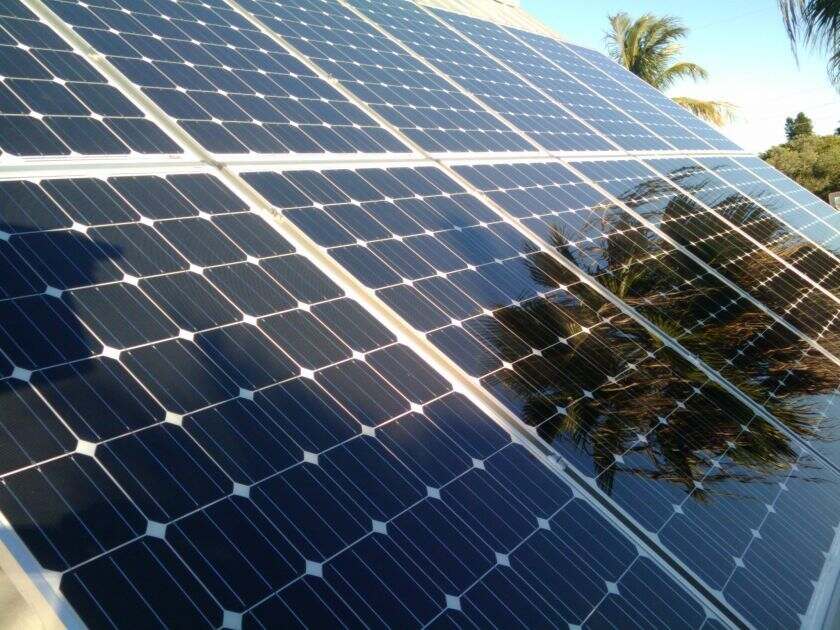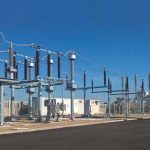A solar cell that is shaded will not able to pass current and/or voltage to an unshaded cell through them, which causes the maximum power rating of the shaded cell to drop as a result of shading. More the cell shading more will be the drop in power. A cell with 75% shading would be more worsen than the three cells with 25% shading. The unshaded cells develop a negative voltage and draws power than the shaded cells since they try to pass more amount of current than the shaded cells. When the power output of the shaded string reduces, the power output of the remaining panels in the string reduces as well. The inverter circuit will try to reduce the power output, and also eventually the output voltage of the string also drops out of the operating window of the inverter. In such a case, under shaded conditions, a string of cells that are connected in a series fashion may produce a voltage drop of 12 Vdc.
When a bypass diode is connected in parallel to the string of cells that are connected in series, produces a voltage drop of around 0.7 Vdc. As the electricity flows through the least resistance path, here the current flows through the diode and bypasses the shaded cells. However, if the bypass diodes were not present in the circuit, the effect of the shading would be even greater as the shaded solar cells draw about 12 Vdc, so that the solar module’s voltage may be reduced to 24 Vdc.
The most horrible condition that can be imaginable with a solar module that has no bypass diodes is that it may cause fire and the by-product certainly will be the heat. This is improbable but possible under certain possible conditions. After a few days of operating under the shaded conditions, the additional amount of heat produced and multiple temperature cycles may cause the solar cell joints weak. If the joints get more weaken and disconnect, there might be a possibility of producing an electrical arc. The high temperature penetrating from the electric arc may cause the glass to explode by allowing oxygen into the lamination of glass which holds the cells in the solar panel. In such a case the high and flammable EVA which holds the glass laminate and solar cell together may catch the fire. This condition has to be avoided at all costs. Hence, bypass diodes are therefore needed in all solar electric modules/panels.
Photovoltaic Solar Cell Construction
A photovoltaic cell is created when a positively charged P – type semiconductor and a negatively charged N – type semiconductor placed in opposite directions to each other which forms a diode. In practice, this semiconductor sandwich is combined with supporting materials otherwise can be called as doping materials to make the diode. This diode is connected in a circuit by means of metal conductors on both the top and bottom of the silicon sandwich to make panels, where they can be arranged in an arrayed fashion to provide different amounts of electricity. Actually the PV cell includes an anti‐reflective coating to accept the most amount of sunlight into the silicon sandwich. This anti reflecting sheet tries to reduce the amount of sunlight reflecting from the glass by allowing the most amount of sunlight to hit the photovoltaic cell and increases the solar panel’s efficiency.
The photovoltaic cell is the vital element in a whole photovoltaic system, the photovoltaic panel is used to make a cell or a group of cells make usable. In photovoltaic panel, photovoltaics may be used alone or in a group of panels to power the large number of different electrical loads. Various types of photovoltaics vary in their size and structure.
· A single cell or multiple numbers of cells are the core part of the photovoltaic panel.
· A glass lamination is placed over the photovoltaic cell to protect it from the outside elements by allowing the sunlight to pass through to the photovoltaic cell.
· An additional plastic anti‐reflecting sheet is frequently used to improve the effect of the glass laminated cover and anti-reflective coating of the photovoltaic cell to block the reflection.
· A panel backing that is usually plastic and a frame will usually complete the photovoltaic panel by holding all the pieces together and thereby protecting it from damage during the process of installation.


